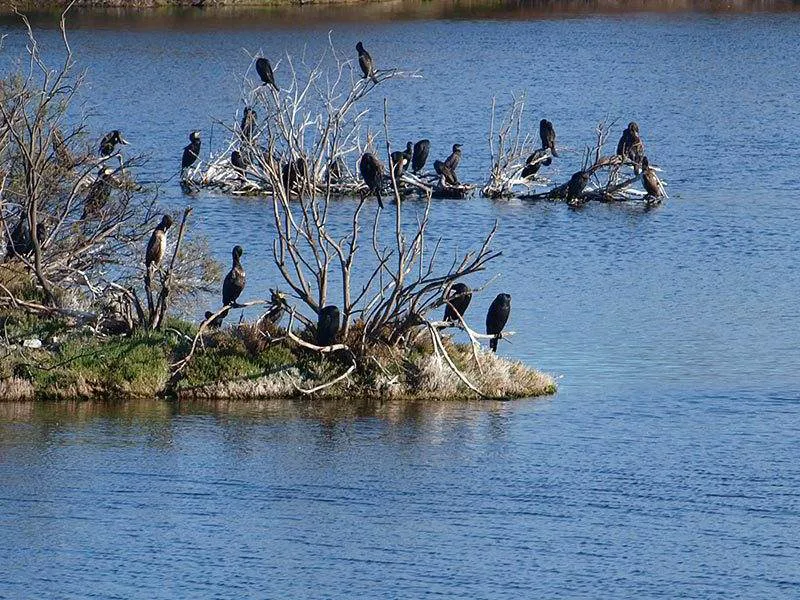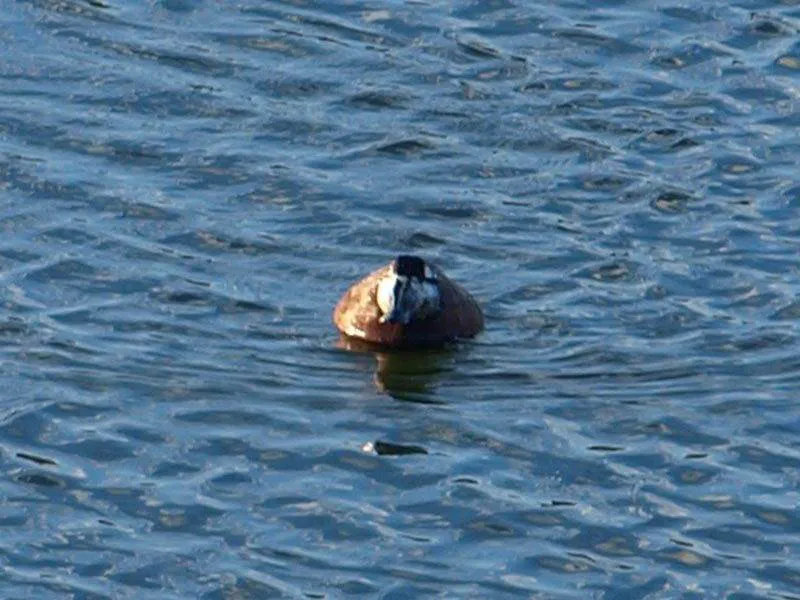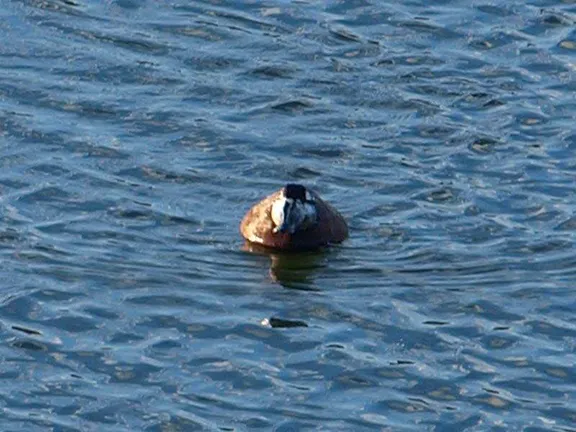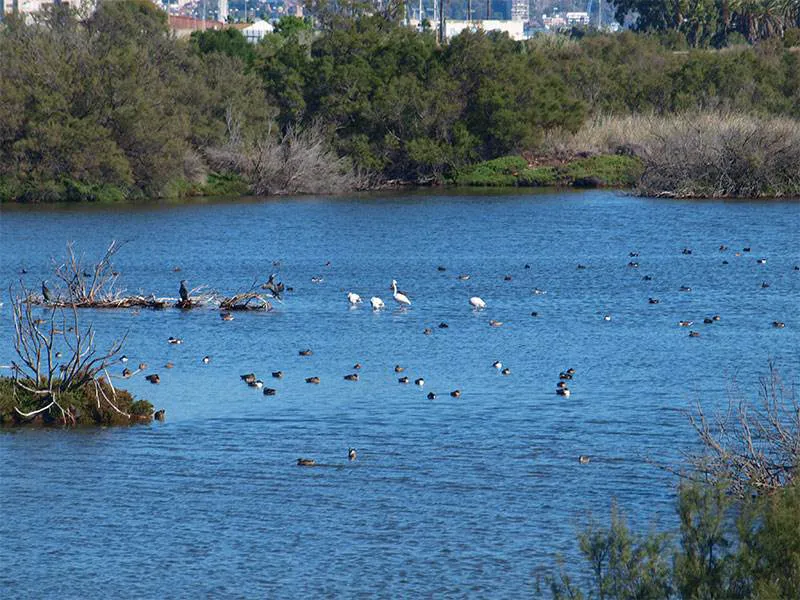At the mouth, or estuary, of the River Guadalhorce, is one of the best bird watching sites in Malaga Province
By Nick Nutter | Updated 29 Aug 2022 | Málaga | Birdwatching |
Login to add to YOUR Favourites or Read Later


Cormorants
The mouth of the Guadalhorce, called “El Guada” by local birdwatchers, is the most important wetland in the province of Málaga along with the Fuente de Piedra lagoon. It is undoubtedly the best place to watch birds on the Costa del Sol and possibly in eastern Andalucia. It is located west of the city of Malaga near the airport, almost beneath the aircraft flight path.


Booted Eagle
The Guadalhorce Estuary natural site is an island of 120 hectares, formerly used as agricultural land that was called Finca La Isla. Today it consists of a complex of disused gravel pits and an arm of the river that forms a lagoon. The estuary site has five permanent water lagoons, temporary ponds, two arms of the Guadalhorce river and the wild beach along the Mediterranean coast. There are well placed hides overlooking the lagoons.


White Headed Duck
A few hundred metres from the sea the River Guadalhorce splits into two arms, the eastern arm is imaginatively called Brazo de Levante whilst the western arm is called, you guessed it, Brazo de Poniente. Between the two is a 67 hectare triangle of land. Despite appearances it is mainly man made. Until the 1970’s the area was agricultural land, this was reduced in area during the 70s and early 80s as gravel and sand mining for the burgeoning construction industry became more lucrative. The pits created filled with spring water to form lagoons. The area was then landscaped to improve the natural vegetation cover, reduce the number of lagoons to seven and install the paths and hides. As a result the estuary is home to a diverse range of birds, over 300 species can be seen here during the year, some migratory, some resident, that take advantage of the various environments, beach, saltwater estuary, sand dunes, salt marsh and fresh water lagoons and some days up to 80 different species have been observed.


The best time to visit is between September and March. The site then hosts large numbers of over wintering species from northern Europe.
The following species reproduce locally in the wetland: little bittern (Ixobrychus minutus), night heron (Nycticorax nycticorax), black-winged stilt (Himantopus himantopus) and small plover (Charadrius dubius).
The lagoons attract waterfowl and there is no shortage of ducks, herons, coots, western swamphen (Porphyrio porphyrio) and some specialized passerines. It is also easy to observe pelagic seabirds from the beach, especially in winter: Balearic shearwater (Puffinus mauretanicus), great skua (Stercorarius skua), gannet (Morus bassanus), black scoter (Melanitta nigra), among others. Kentish plover (Charadrius alexandrinus) reproduce on the beach.
There was a strong westerly blowing and most of the birds seemed to have congregated at the southern end of the southernmost, unnamed, lagoon. Within a few metres of the hide we saw stilts, pochard, little grebe, cormorants, mallard, plover, egrets, heron and a solitary turnstone. This site, almost beneath the flight path into Malaga airport, is well worth a visit this winter.
Dawned cold but clear with a chilly north westerly blowing down from the mountains across the estuary of the Rio Guadalhorce at Malaga. Whether it was the wind or some other factor we did not see the variety we expected at this time of year at this location however the lack of numbers was more than compensated for by one bird.
A Booted Eagle sat in a tree grooming itself for a good thirty minutes. There are always pluses and minuses. He was so well camouflaged that you had to know he was there to see him and I could not obtain a good photograph. Still, you take what you can find.
There were plenty of White Headed Ducks, Coots, Mallards and Cormorants. We saw a few Teal and a couple of Flamingos put in an appearance along with a few Little Grebe but it was the eagle that made the day.
In one morning we saw: Avocet, Dunlin, Black Winged Stilts, Little Grebe, Pochard, Spoonbill, Flamingo, Ringed Plover, Goldfinch, Gadwall, Red Shank, White Headed Duck, Coot, Common Tern, Moorhen and Bee Eaters.
The Guadalhorce Estuary is a magnet for ornithological oddities, especially species that move through the Mediterranean, which helps to explain the 300 species recorded at this site. You never know just what you will see.
Take the A7 towards Malaga following the signs for the airport. These take you on to the MA 20 and then off on to the new road into the airport. As you come off the MA 20 keep to the left, this takes you to a roundabout beneath the main roads overhead. Turn right and follow the signs for the Desembocadure del Guadalhorce. There are maps at the start of each route.
Please be aware that in the past there have been a number of thefts from vehicles in the vicinity. There is parking available a couple of hundred metres from the start of the walks, in a more populous area, outside the church.